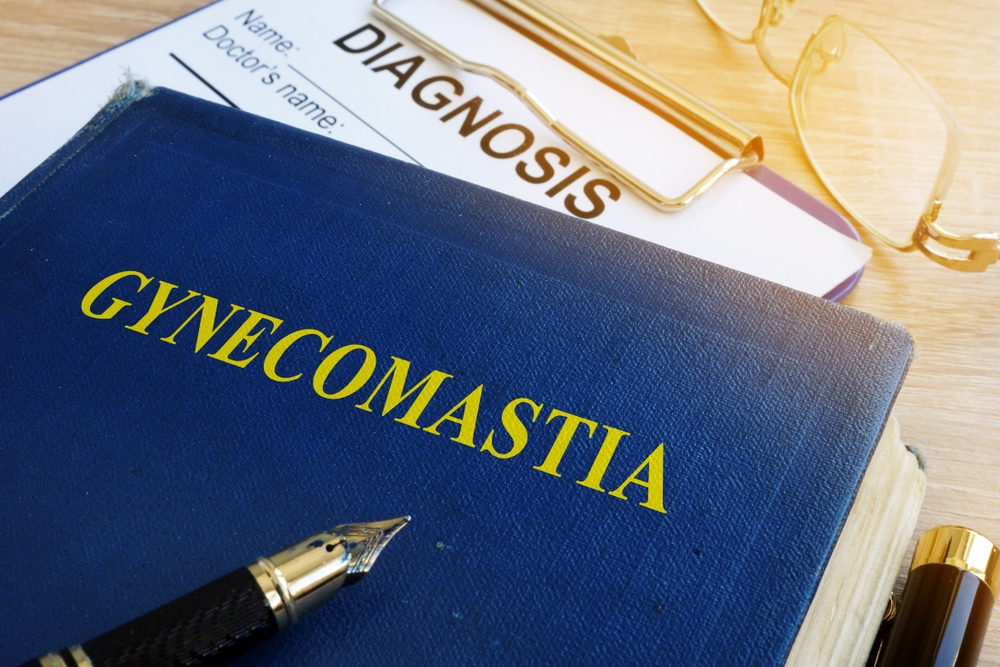
Let’s be real, the pressure to look flawless, or at least airbrushed, affects all the genders. The pressure affects differently, but in a world with high-quality cameras, billboard advertisements, Instagram, and even some places where applying for a job requires a headshot, we’re all feeling it. And that pressure manifests in some places not normally thought of. Women are constantly criticized, shamed, and fetishized for the size, shape, and the look of their breasts, and a similar, more insidious form applies to men as well.
Breasts are affected by changes in our bodies because they are very much attached to them, and things like losing or gaining a few pounds will show in your breasts. Age, fat accumulation, and even injury take their toll on the breasts, and breasts are biologically engineered to point the nipples downward, which involves sagging. Gynecomastia has many causes, and any man could have multiple causes sabotaging his figure.
Possible Causes
Abnormal Male Estrogen Levels
This is the most common reason for enlarged male breast tissue. Men are usually born with a little estrogen alongside the majority of their testosterone, and sometimes the levels change wildly. However, fluctuations in the balance of hormones happen naturally at certain ages and certain points of life.
Birth
Little more than half of baby boys still affected by the estrogen from their mothers show gynecomastia that naturally disappears 2-3 weeks after birth.
Puberty
Puberty is the gateway to growth, expansion, and maturity. And larger breasts caused by changing hormone levels (pubertal gynecomastia), which usually go away 6 months – 2 years after the onset of puberty.
Mid-Life
50 years of age is an impressive number, and usually when male breast enlargement can make a comeback. 25% of men between 50-80 years of age experience gynecomastia.
Pre-existing Conditions
Imbalances in male estrogen tend to be the cause of gynecomastia, but any number of pre-existing conditions can result in male breast enlargement, including “obesity, malnutrition, androgen deficiency syndrome, a deficiency in testosterone, testicular tumors or tumors in the adrenal glands, ectopic HCG production, a hyperactive thyroid, liver disease, kidney disease or failure, renal disease or failure”
Medicines and Drugs
Certain medications and drugs can also cause male breast enlargement, and because of the condition’s multiple sources, the drugs make up a long list of causes of breast cancer. These drugs include:
- many types of estrogens (or activity perceived as estrogen)
- androgens
- testosterone and DHT like finasteride and chemotherapy
- blockers for androgen receptors like marijuana
- heart and heartburn medications
- antibiotics and antifungal medicines
- some antidepressants
- medicine for treating HIV/AIDS
- increased PRL serum-like Verapamil
- certain steroids
- other uncategorized drugs
Exam & Diagnosis
Gynecomastia surgery targets the condition which enlarges the glandular tissue. Conditions that are not gynecomastia but have very similar symptoms include fatty tissue deposits, which is a result of obesity and not the expansion of mammary glands.
Male breast cancer tends to affect just one breast and sometimes forms a lump, and the tissue hardens or the lymph nodes swell which gives the illusion of breast tissue growth. Fatty deposits from obese patients can also make breast tissue appear to be expanding.
How do doctors confirm or deny whether a condition is gynecomastia or otherwise?
An evaluation with questions regarding onset, pain or tenderness levels, actual glandular growth, possible undetected breast cancer, potential tumors, and personal feelings about the enlarged breasts is the leading rubric, to which the rest of diagnosis and treatment will be influenced by.
Doctors and other medical experts will closely follow history of the patient’s health detailing how long enlargement has occurred, pain or tenderness and weight gain or loss, changes in the size, retraction, and nipple discharge of the breasts, medication lists and histories, pre-existing conditions not known of, sexual function and fertility, or family history of breast enlargement.
In some rare cases, researchers found that when physical examinations to try and find a disc or firm tissue surrounding the nipple-areola section were not effective enough to confidently determine a cause, more intensive methods to determine stubbornly hidden causes were required.
Laboratory examinations are now better than ever and are incredibly useful to gynecomastia experts, and these examinations need to include tests for the liver, kidneys, and thyroid. Tests detailing hormone levels are also needed, and all-negative test results mean idiopathic gynecomastia for the patient.
Mammography may also be called for, particularly if cancer or a medical history risking cancer is a potential cause.
Treatment for Male Breasts
What to do? Many men admirably accept their condition and adjust accordingly to it, but the choice is yours. And if you decide to do something about your ‘man boobs’, then you have many choices. Doctors have observed that in many cases, fibrotic tissue replaces any swollen glandular tissue causing enlargement and that many patients require only follow-up exams and questioning in 6-month increments.
For a solution, however, male breast reduction is the most frequented remedy to gynecomastia. This male breast treatment removes excess tissue, and sometimes excess skin, off your breasts to return them to a firm, flat shape.
There is no embarrassment in getting help for male breast enlargement. The causes are plentiful, and choices to treat it are equally so, and you deserve an expert with the experience, knowledge, and care you need. Consult with Dr. Vitenas and his team to decide which is the best course of action for you!
